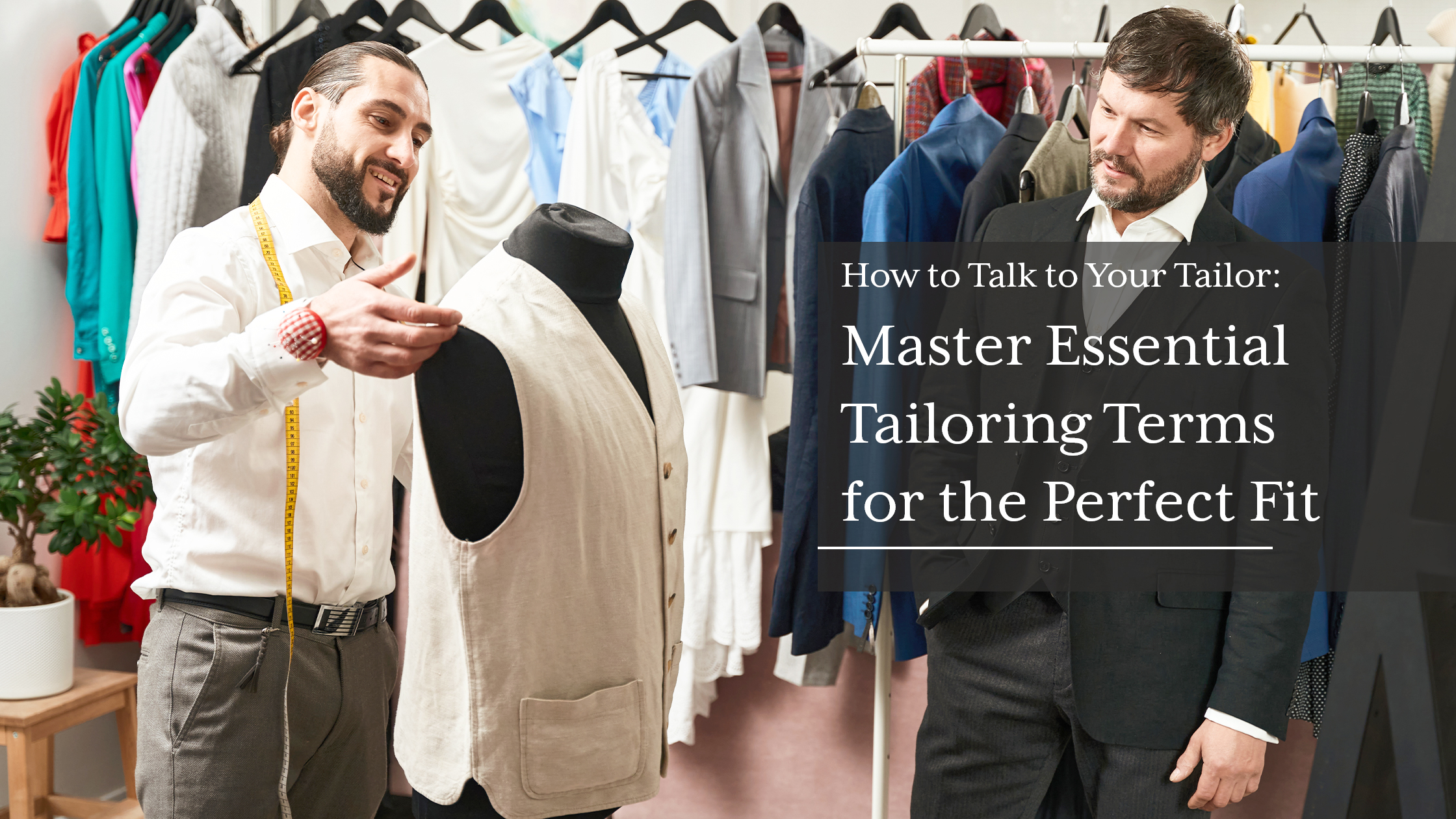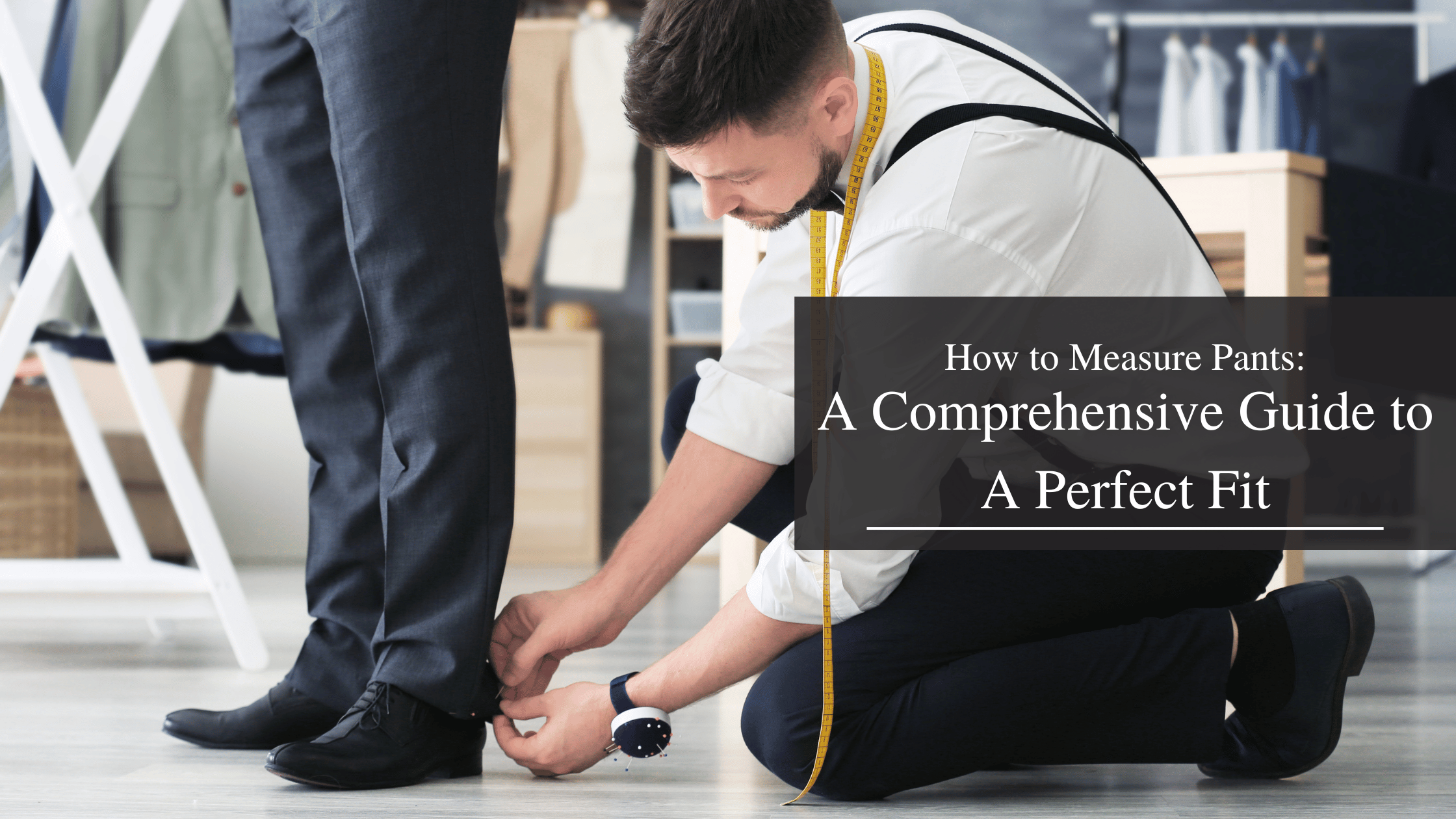
Walking into a tailor’s shop can be daunting with all the measuring tapes, fabric swatches, and unfamiliar terms. However, knowing how to communicate with your tailor and understanding key jargon can help you achieve the perfect fit. Especially when seeking a skilled tailor in Bangkok, where bespoke clothing is a celebrated craft, clear communication is crucial.
This guide simplifies essential tailoring terms, enabling you to speak confidently with your tailor. From darts to pleats and understanding “break” or “inseam,” you’ll soon be fluent in tailoring language. Ready to elevate your wardrobe? Let’s dive in.
Key Tailoring Terms
Alterations – Modifying an existing garment
Alterations make off-the-rack clothes work better with your body. Whether shortening hems, taking in waists, or tapering trousers, these adjustments make store-bought garments feel custom-fitted.
Common alteration services range from (GBP x to x, THB x to x, and USD x to x). Looking for same day alterations? Click here to get your perfect suit altered today in just 24 hours! Next, let’s look at some defining jacket features like lapels.
Lapel – Notch, peak, or shawl styles
A lapel is the folded flappy edge on the front of a jacket. Asking your tailor the right questions is pivotal in getting the right lapel.
Talking Points:
- Which lapel style is best suited for formal events?
Peak lapels are ideal for formal events due to their sharp, sophisticated look, though Shawl lapels are also classic for black-tie affairs - How do I determine which lapel width is most flattering for my body type?
Slimmer lapels suit narrower frames, while wider lapels complement broader shoulders; aim for proportionate balance with your physique - What role does the lapel size play in determining the overall look of a suit?
Larger lapels create a bolder statement, while smaller lapels offer a sleeker, more modern aesthetic
Asking your tailor the right questions is pivotal in getting the right lapel.
Vent – Single, double, or no vent
A jacket vent refers to the slit(s) on the lower back, influencing a jacket’s movement, fit, and style. Single vents, with one centre slit, are common in American-style suits. Double vents feature slits on both sides, offering better ease of motion and breathability. Jackets with no vents favour sleek, unbroken backlines but restrict movement.
Talking Points:
- Which vent style offers the most comfort and flexibility?
Double vents provide the most comfort and ease of movement, as they allow the jacket to drape naturally when sitting or reaching - Can I choose a vent style based on my body type?
Yes, double vents suit taller or broader builds by enhancing proportion, while single vents work well for slimmer frames seeking a clean look - What are some practical benefits of choosing double vents over single vents?
Double vents offer better airflow, reduce fabric bunching when seated, and provide a tailored yet functional aesthetic ideal for active wearers
Canvas – Full, half, or fused construction
Canvas construction determines how a jacket’s fabric is shaped and structured. Full canvassed jackets contain canvas layers stitched throughout, creating natural drapes and durability, while half canvassing covers critical areas like chest and lapels. Fused construction, cost-effective but less breathable, involves bonding interfacing to material with adhesive. When evaluating the structure of your suit, keep these points in mind to make an informed decision about canvas construction:
Talking Points:
- Can canvas construction influence how a jacket feels when worn?
Absolutely, canvassed jackets feel lighter, mold naturally to the body, and offer greater freedom of movement compared to fused ones - How do I determine whether my jacket is fully canvassed, half-canvassed, or fused?
Feel the interior chest area: fully canvassed jackets are soft and flexible, half-canvassed feel partially stiff, and fused jackets are uniformly rigid - Does canvas construction matter more for specific fabrics or styles?
Yes, heavier wools benefit from full canvassing for structure, while lighter fabrics like linen might work fine with half-canvassing
Inseam – Length from crotch to hem
The inseam measures the inner leg seam, running from the crotch to the hem. It’s essential for defining trouser length and avoiding poorly fitting or bunched fabric around shoes. Tailors often pair inseam adjustments with personal styling, e.g., ensuring cuffs land just right. Short inseams expose ankles more, while longer ones suggest conservatism.
Talking Points:
- How does inseam length affect the overall look of an outfit?
Proper inseam length ensures clean lines; too long creates bunching, while too short exposes excessive ankle, disrupting proportions - Is there an ideal inseam length for different shoe styles?
For dress shoes, trousers should lightly break above the shoe; sneakers often suit slightly shorter hems for a modern look - How do I know if my trousers need an inseam adjustment?
If they drag on the ground, bunch at the ankles, or feel too short when standing, an adjustment is likely needed
Rise – Low, mid, or high waist position
Rise involves the vertical distance between the crotch seam and waistline and plays a critical role in silhouette-making decisions. Low-rise trousers sit below the hips, offering a modern, casual vibe. Mid-rise designs, resting just above the hips, balance style and comfort for most body types. High-rise trousers sit on your natural waist, evoking vintage charm or emphasising leg length.
Talking Points:
- How does the rise affect the comfort and mobility of trousers?
A higher rise may restrict movement if too tight, while mid-rise balances comfort and mobility by aligning with natural body contours - What body type is most flattered by high-rise trousers?
High-rise trousers elongate the legs, making them ideal for individuals with shorter torsos or those seeking a vintage-inspired silhouette - Does the rise affect how trousers should be washed or cared for?
Rise itself doesn’t dictate care, but fabric and construction (e.g., tailored vs. casual) influence maintenance routines
Break – No, half, or full break on shoes
Trouser break communicates how much fabric touches your shoe, reflecting your personal style. “No break” leaves trousers grazing the shoe top, offering a clean, sharp look. A “half break” achieves middle ground, with a slight fabric crease above the shoe. A “full break” delivers extra fabric length, creating multiple folds for classic styles.
Talking Points:
- Does the fabric weight influence the choice of break?
Heavier fabrics (e.g., wool) hold structure better for full breaks, while lighter materials (e.g., cotton) suit no or half breaks - What body type is best suited for a “no break” style?
Slimmer builds or shorter individuals benefit from the streamlined look of a “no break” - What are common mistakes to avoid when selecting a break?
Overlooking shoe height (e.g., pairing “no break” with thick soles) or mismatching breaks with outfit formality
Yoke – Back panel shaping
The yoke refers to the horizontal fabric panel across the back of a shirt, just below the collar that helps shape the shirt’s shoulders and back contour.
Talking Points:
- What is the difference between a plain yoke and a split yoke?
A plain yoke is a single horizontal panel, while a split yoke divides the panel into two sections for precise pattern alignment and a tailored fit - How does the yoke affect a shirt’s comfort and mobility?
The yoke distributes fabric across the shoulders, allowing flexibility and ease of movement, especially during activities like bending or reaching - Are split yokes worth the extra cost for everyday wear?
Split yokes enhance durability and fit, making them a practical investment for high-quality, long-lasting shirts
Placket – Buttoned front structure.
A shirt’s placket is the vertical strip of fabric running down the front where buttons and buttonholes align.
Talking Points:
- What is the difference between a classic placket and a French placket?
A classic placket features visible stitching and a reinforced strip for buttons/buttonholes, while a French placket is seamless, with the fabric folded inward for a clean, minimalist look - How does the placket style affect a shirt’s formality?
French plackets are sleeker and preferred for formal shirts, while classic plackets add structure and are common in casual or traditional designs - Ideally, where should buttonholes be placed on a placket?
Buttonholes should run vertically along the center front (CF) of the placket, with buttons positioned at the top of the holes (not the middle) for proper alignment
Cuffs – Barrel or French styles
Cuffs secure a shirt’s sleeve end, serving both functionality and style.
Talking Points:
- How can I ensure my shirt cuffs fit properly under a jacket?”
Cuffs should extend ½” beyond the jacket sleeve, sit snugly at the wrist bone, and avoid excessive tightness or looseness - How does cuff style affect the formality of a shirt?
Barrel cuffs are adaptable for business or casual wear, whereas French cuffs are reserved for formal occasions due to their elegant, cufflink-fastened design - How can I adjust the fit of my shirt cuffs?
Barrel cuffs offer button adjustments for wrist snugness 48, while French cuffs rely on cufflinks and tailored stiffness to maintain shape
How to Talk to Your Tailor
Building a good rapport with your tailor ensures clarity and satisfaction. Whether commissioning a bespoke suit or adjusting an existing one, the key is effective communication about your preferences, comfort, and lifestyle.
Explaining Fit Preferences
Tailors in Bangkok often ask about preferred fits:
- Slim Fit: Contours closely to the body for a modern, youthful appearance
- Regular Fit: Offers a classic balance between structure and comfort
- Relaxed Fit: Ideal for tropical wear or casual occasions
Choosing the Right Fabric
Fabric selection is especially important in Thailand’s tropical climate. Consider lightweight, breathable materials such as linen, cotton, or tropical wool. Michael Tailors, for example, offers premium fabric selections that are both elegant and suitable for year-round comfort in Bangkok’s weather.
- Linen: Ideal for warm months, offering maximum breathability
- Tropical Wool: Light yet structured; a favourite for business suits
- Cotton Blends: Easy to care for and versatile for travel or office wear
Understanding the Tailoring Process
The tailoring process usually includes multiple fittings to ensure a precise, flattering fit. In Bangkok, bespoke tailoring can take one to three weeks, depending on the complexity and schedule. Express services for visitors are also available at select shops.
Discuss timelines, fitting stages, and your intended use for the garment (e.g., business, wedding, or travel). This helps the tailor suggest the best fabrics, cuts, and linings for durability and comfort in Thailand’s weather.
Why Choose Michael Tailors
Michael Tailors stands among the best tailors in Bangkok, recognised for blending traditional craftsmanship with modern precision. As a trusted Bangkok tailor, the atelier has earned the confidence of business travellers, diplomats and style enthusiasts from around the world.
- Expert Craftsmanship: Every suit is hand-cut and individually fitted by skilled tailors with decades of experience
- Premium Fabrics: From Italian wools to breathable tropical blends, each fabric is selected for Thailand’s unique climate
- Personalised Service: Clients receive one-on-one consultations to discuss fit, fabric, and design preferences
- Convenient Location & Express Service: Ideal for travellers, with 24-hour turnaround available for alterations and rush orders
Whether you are seeking your first tailored suit or refining your wardrobe, Michael Tailors ensures that each piece reflects your personal style and professional confidence. Experience the art of Thai tailoring where tradition meets modern elegance.



